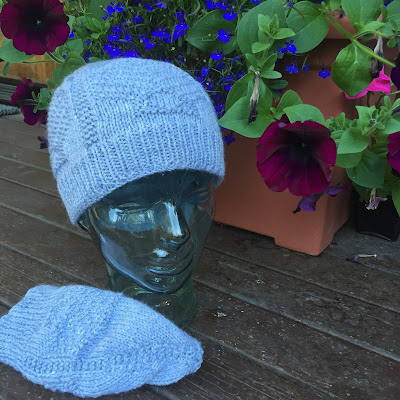Because the ferry schedule is so awkward, (so awkward, indeed, that the web site is hopelessly out of date and you'd better phone them if you're serious about going there) I had to arrive a day ahead of the start. This turned out to be a useful opportunity to scope out the town and environs. And at the Chinese restaurant just before I crossed the street to sign in, this was my fortune cookie:
The first Saturday and Sunday: a two-day workshop about hat design. Whaat? Two days to figure out how to knit a topper? Well, yes, if your teacher is the brilliant Bonne Marie Burns.
She used the humble knit beanie to give us insight into the design process of all knit garments. This means some serious and diligent swatching (stitch and row), and serious thought about sizing, materials, construction, and an historical detour into the development of the knit hat from the 1400s.
She taught us how the math of the top decreases rules the process, and how the designer can fiddle, fudge, frog, and maybe some other f-words, too, to make inspiration mesh with stitch counts and create a realistic plan for a real product.
We learned about using tear sheets for inspiration, and wrote our own design concept statements, followed by the hard graft of the actual plan for the design.
We measured heads, swatched swatches, swatched potential stitch patterns, tried out this 'n' that, so that by the end of the two days, I had a clear idea of what I wanted to do, and a definite plan for it, but had not cast on a serious stitch yet. Eventually I did cast on, and in fits and starts and odd moments managed to make most of what I call the rough draft version of my hat.
The Big Idea was to make a 4-panel hat featuring a scallop shell texture motif in each one. The shell was based on one in an Alice Starmore sweater, Cape Cod by name. Executed in a different gauge and fiber, however, it was a miserable squashed caricature of a shell, so needed a good bit of revising and rescaling. Likewise, the panel dividers went through several iterations, as did the crown decrease method. I can now say with confident experience that as the proof of the pudding is in the eating, the proof of the pattern is in the knitting. You just don't know what it will look like till you know what it looks like.
Here's the finished product, with rough draft huddled below.
3/4 view:
And the top. Just love that p2tog "button" as the center finish:
I have to say I'm really proud and pleased with myself, and massively grateful to Bonne Marie for all she taught us.





No comments:
Post a Comment